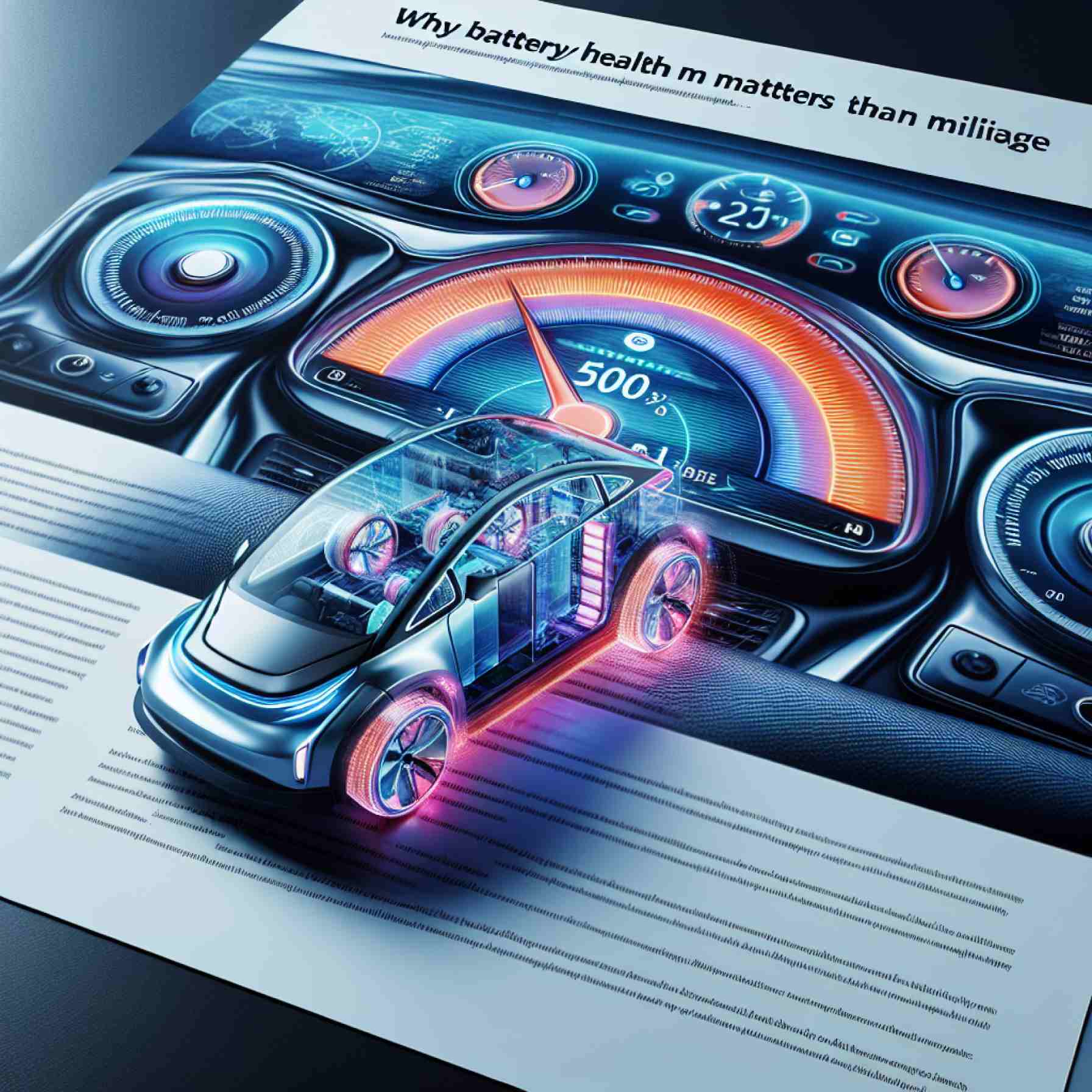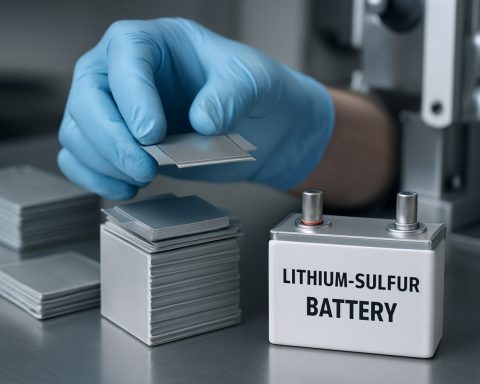- Battery health is becoming a crucial metric, surpassing traditional odometer readings for evaluating electric vehicles (EVs).
- Generational, a leader in EV battery certification, highlights that 2023 EVs with 90,000 miles retain 86% of their original battery health, demonstrating significant advancements over older models.
- The shift toward durable battery designs is reshaping how EVs are valued, sold, and trusted in the market.
- Transparent battery health evaluations empower consumers and retailers, transforming potential pitfalls into informed decisions.
- Companies like Polestar are adopting battery state health certificates, fostering trust by providing transparency in battery conditions for used EVs.
- Understanding battery health is poised to become the defining measure of reliability and value as the used EV market grows.
On a bustling street, where electric cars glide with a whisper rather than a roar, a quiet revolution in how we evaluate these vehicles is unfolding. As we edge deeper into the EV era, the narrative is shifting; it’s not about how far these cars have traveled, but how robustly they are poised to continue the journey.
The spotlight has turned to battery health, a metric gaining sway over traditional odometer readings. It’s a seismic shift, driven by insights from Generational, a leading name in EV battery certification, highlighting that the battery health of a vehicle signals its veritable lifeline. In a striking testament to technology’s march forward, data from Generational’s innovative testing platform shows that 2023 model EVs, even those with a hefty 90,000 miles under their belts, retain an impressive 86% of their original battery health. This figure eclipses the sub-76% average found in comparable 2016–2017 models.
Imagine the wheels of innovation turning swiftly, propelling car manufacturers toward durable, life-prolonging battery designs. With each mile that passes beneath their sleek exteriors, new EVs manage to preserve their heart and soul in a way their predecessors could not. A 2023 EV’s battery at 50,000 miles retains over 5% more health than those from just a few years prior—a testament to rapid advancements in battery resilience and efficiency.
The implications for the market are profound. As both buyers and sellers recalibrate their expectations, understanding the health of an EV’s battery now invites as much scrutiny as engine integrity once did. This knowledge could very well dictate the path forward for how new and used EVs are valued, sold, and trusted.
For retailers and consumers alike, the rise of comprehensive battery health evaluation has transformed potential pitfalls into informed decisions. Oliver Phillpott, the dynamic CEO of Generational, encapsulates the sentiment that echoes through auto showrooms and dealerships: knowledge is empowerment. Understanding the battery’s condition, rather than just the distance traveled, offers a window into the true longevity and value of an electric vehicle.
Retail bourses are now feeling the pressure to embrace transparency, providing battery health scores alongside traditional vehicle reports. The promise is simple yet profound—transparency breeds trust. It’s a principle embraced by companies like Polestar, which recently launched battery state health certificates for their used models. This initiative doesn’t just certify the usability of a battery; it reassures potential buyers that their investment is safeguarded, promising a road replete with reliability.
As the used EV market expands and evolves, learning to gauge a vehicle’s vitality through the lens of battery health instead of the archaic mileage metric will become second nature. The results are a win-win: enhanced value for legacy models still brimming with potential, and an assurance for new owners venturing into the new realm of electric mobility.
The future is quietly charging forward, powered by sparks of innovation and a deeper understanding of the vehicles we will increasingly rely on. Battery health is destined to be not just a helpful measure, but the defining yardstick of reliability and value in the electric age. It’s a story about not just where we’ve been, but where we’re yet to go. And, crucially, it’s about ensuring that journey remains as smooth as it is sustainable.
The Surprising New Metric Changing How We Value Electric Cars
Introduction
Electric vehicles (EVs) are steering the automotive industry towards an electrifying future. With a shift in focus from merely measuring how far these vehicles have traveled, the narrative now emphasizes battery health as the primary gauge of an EV’s longevity and reliability. As Generational, a leader in EV battery certification, has demonstrated, cars sporting over 90,000 miles can still maintain an impressive 86% of their original battery health—a far cry from the sub-76% found in older 2016-2017 models.
The Importance of Battery Health in EV Valuation
In the past, mileage was a key indicator of a vehicle’s value. However, in the realm of EVs, the health of the battery has taken precedence. For potential EV buyers, understanding battery health means getting insights into the true longevity of the vehicle. A well-maintained battery not only extends the vehicle’s lifespan but also enhances its resale value.
Key Insights
– Improved Battery Resilience: Advanced battery designs in 2023 models show a considerable improvement over previous years, often retaining over 5% more health after 50,000 miles compared to older models.
– Market Implications: Emphasizing battery health can transform the used EV market by providing buyers with a more transparent evaluation criterion. Industries are adjusting to include battery health scores in vehicle reports, breeding trust and transparency.
How-To Maintain Battery Health
For EV owners wanting to prolong their battery’s lifespan, here are actionable steps:
1. Regularly Monitor Battery Health: Make use of available tools and apps to keep track of your battery’s condition.
2. Optimize Charging Practices: Avoid letting the battery fully deplete before charging. Instead, try to maintain a charge level between 20% and 80%.
3. Avoid Extreme Temperatures: Exposure to extreme heat or cold can degrade battery health. Whenever possible, park your EV in shaded or climate-controlled environments.
Real-World Use Cases
For urban commuters or ride-share drivers, maintaining optimal battery health can mean reduced operational costs and extended range. Fleet operators can particularly benefit by incorporating battery health checks into routine maintenance, ensuring fleet reliability and performance.
Industry Trends and Predictions
The EV market is poised to expand rapidly in the coming years. As battery technologies continue to evolve, the industry can expect to see:
– Greater Adoption of Battery Health Certifications: Like Polestar’s initiative to issue battery state health certificates for used models.
– Technological Advances: Continued improvements in battery chemistry, including solid-state batteries, which promise greater energy density and safety.
– Regulatory Support: As nations push for greener transport solutions, expect supportive policies to emerge, favoring thorough battery health evaluations.
Pros and Cons of Current EV Battery Technology
Pros:
– Enhances vehicle longevity and resale value
– Offers a more accurate valuation method compared to mileage alone
Cons:
– New technology can be costly
– Consumers may face challenges in understanding complex battery health metrics
Conclusion and Recommendations
For current and prospective EV owners, keeping abreast of battery health metrics is crucial. Regular monitoring and adherence to best charging practices can significantly prolong the life of your vehicle. On the industry front, embracing transparency by openly sharing battery health scores will foster trust.
As the EV journey progresses, driving sustainability and innovation remains paramount. For further insights and up-to-date trends in the EV industry, visit Generational. Start evaluating vehicles not by their mileage but by the robustness of their heartbeat—the battery.









